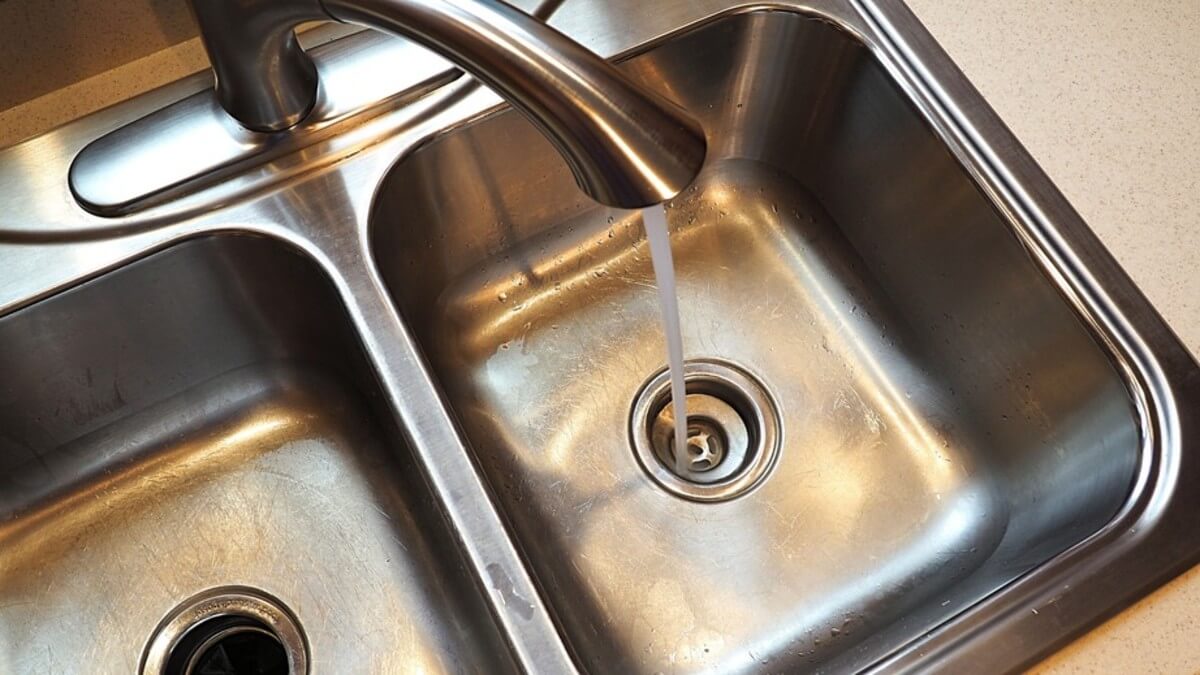A clog in the kitchen sink is one of the common problems that you may encounter in your home which forces you to utilize your swiggy money. When unresolved, it can be frustrating because your sink won’t drain. This plumbing issue will disrupt your daily chores. The good news is that there are simple tools and techniques that you can employ to solve this plumbing issue. They include:
DIYing with baking soda, salt, and vinegar
Grease from utensils is one of the things that may clog your sink and disrupt the flow of your wastewater. A strong solution comprised of baking soda, vinegar, and salt will unclog your sink when you follow the procedure below:
- Pour hot water down the drain to break and soften the clog.
- Mix ½ cup baking soda and ¼ cup salt and pour it into the drain hole.
- Heat a cup of vinegar and pour it into the drain hole.
- Cover the drain to prevent foam from flowing out.
- After 15 minutes, run water down the drain to clear the debris.
Use boiling water and salt
For lighter clogs, you could use salt to clean the pipe and get rid of bad odor. Given that the effect is mild, you will need to use this technique repeatedly, especially if the clog is not clearing up fast. With this method, you will need to
- Pour half a cup of salt into the drain hole.
- Pour boiling water into a kettle.
- Rinse with hot tap water.
- Repeat the process until the clog clears.
Use a wire hanger
If you lack a drain snake, you could improvise with a hanger to dismantle the clog. This technique works best if the clog is not far down your pipes. To succeed in this method, you need to
- Straighten the hanger with pliers and untwist it with your hands.
- Make a handle on one end and use it as a regular drain snake.
Use a plunger
The trick to unclogging with a plunger is to use the traditional flat-bottom sink plunger. This device lays flat over the sink to create a vacuum and ultimately clear blockages in the pipes and drains. To ensure that this method works, you need to:
- First, run some water into the sink to help with the suction and begin to plunge.
- Run water into the sink and if it drains, your work is done.
Clean the P-trap
The P-trap is part of the drainpipe and is the curve located underneath the sink. When you have a clogged sink, it is ideal that you first open the P-trap to assess the extent of the clog. Before you open the P-trap, you need to place a bucket beneath the drain to collect the debris and water that will fall out. Once open, you need to clear the stuck debris and replace the P-trap. Lastly, you need to run warm water through the pipes for few minutes to clean them.
Use an auger
Also known as a plumber’s snake, an auger is a tool that will clear any stuck clogs down your kitchen drainage system. For you to use this device, you first need to disassemble the drainpipe and the P-trap to expose the stub out found behind the wall of the cabinet. The auger will run down the drainpipe breaking up all the clogs.
Blow the clog out
Another interesting and unconventional way to unclog your sink is by use of a wet and dry vacuum. When using this technique, you will need to use the switch control as you hold the vacuum hose on the drain hole. This method could be a bit messy and you will require towels and rugs to clean the water splashes created by the blowout. When a clog is present, the vacuum will produce a different sound from when it is just sucking air. You will know your kitchen sink drain is unclogged when you notice changes in the sounds.
Call in a plumber
When all of the above methods fail to work, that means the problem is beyond your control and you need to call in a professional plumber from team emergency plumber. Having a professional assess and unclog your sink will save you time and trouble rather than having to mess things up in your drain by doing it yourself. While hiring a plumber may be a bit costly, it might just be the one move that saves your whole plumbing system. Just like you visit darmacool when you get tired of browsing your favorite show online.
Final Thoughts
A clogged sink is inevitable in a home due to the many sources of a clog, including hair, grease, and food particles. It’s important to have plumbing tools, such as plungers, augers, and reagents, around your home for those DIY unclogging projects. If you are not confident about taking on such projects yourself, then you need to call a professional plumber. Before you pick up that phone, however, you should first give those simple unclogging methods a try!
James Anderson
Related posts
Stay connected
Today's pick
- Things to Remember While Designing Your Custom Modular Kitchen in GurgaonGurgaon now known as Gurugram is the second largest city in the state of Haryana and is a reflectiossn of an ideal modern city with futuristic goals. Witnessing rapid urbanization, it has also emerged as a hub for contemporary homes, with homeowners seeking innovative and... The post Things to Remember While Designing Your Custom Modular […]

